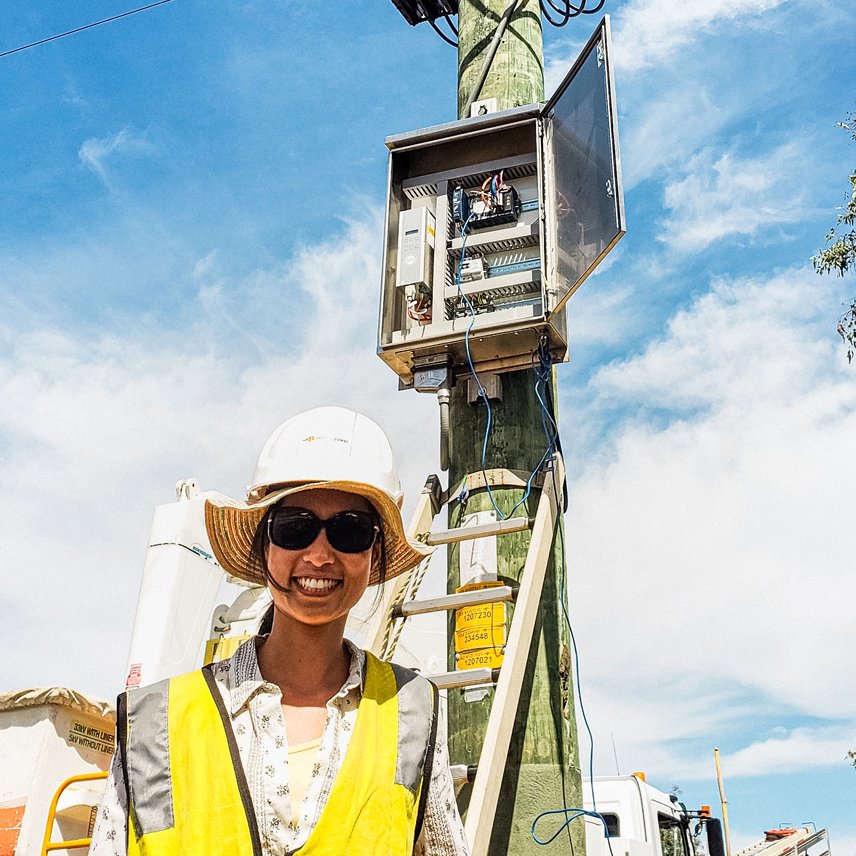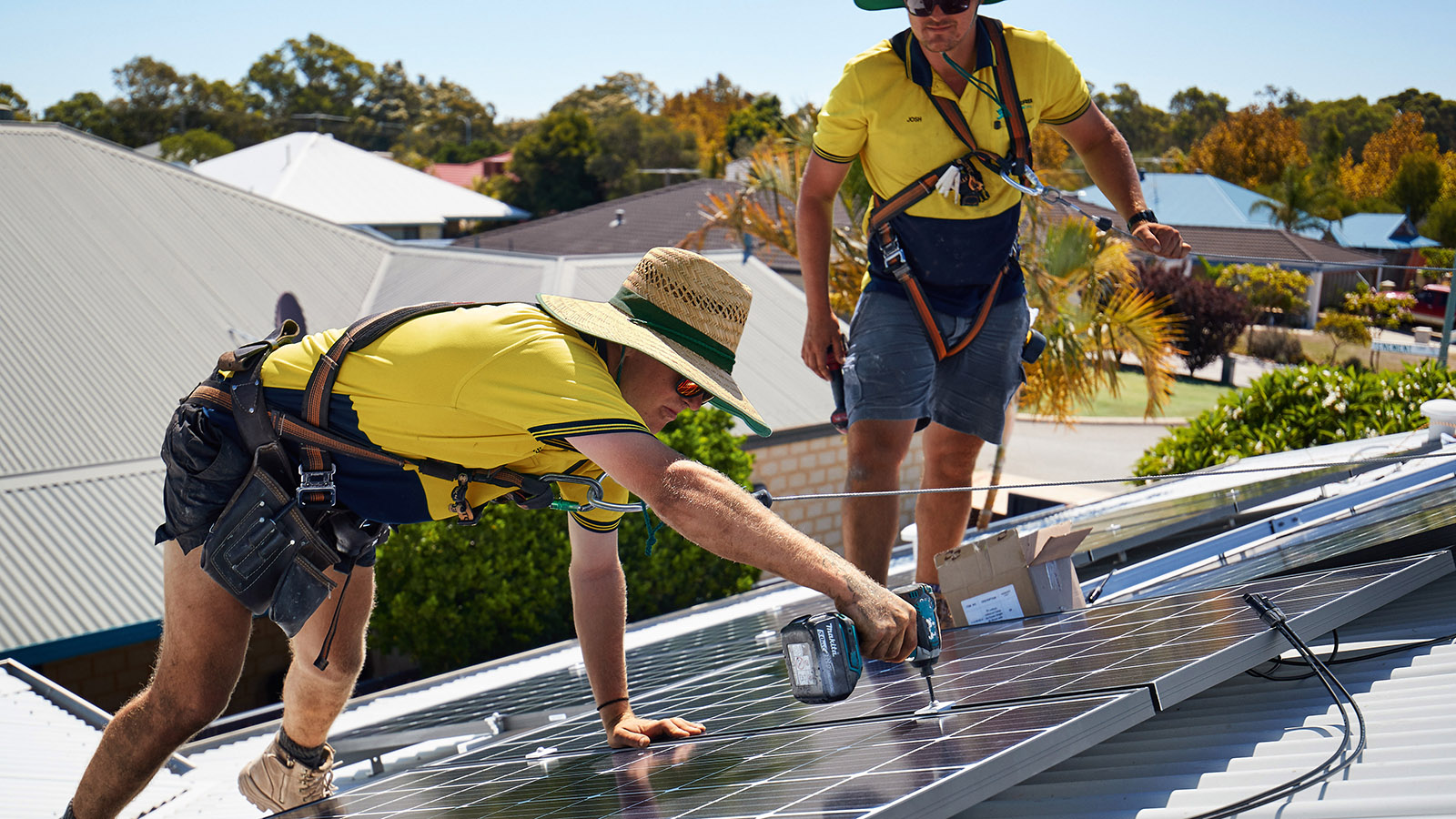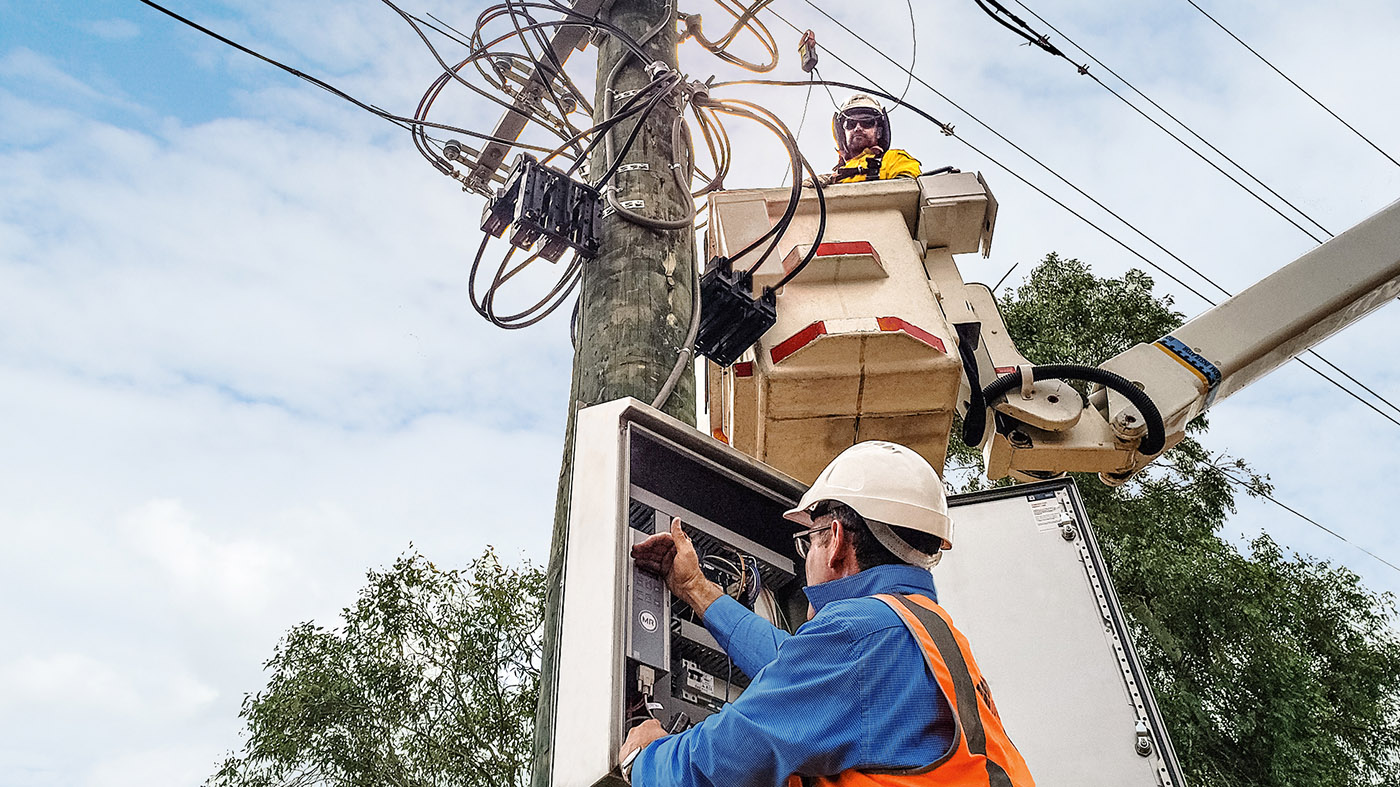Australia is a country full of sun: There are around 3,300 hours of sunshine per year in Perth, home to Australian grid operator Western Power in the state of Western Australia. In comparison, MR headquarters in Regensburg gets just about 1,600 hours of sunshine. It is no wonder that Australia is currently the country with the highest rate of energy production by photovoltaics in the world. Currently, 2.3 million solar units are installed on Australian roofs. As a result, nearly a gigawatt of energy is fed in, with an expected additional 150 megavolt amperes per year in the coming years.
-
Impulses
- Impulses overview
-
Transformer manufacturers
- South America's champions of the energy transition
- Traction Transformers – Future on the Rail
- Time of the giants: XXL transformers for more power
- "Reinhausen is ready to deliver!"
- Oversized de-energized tap-changers
- The most powerful transformers in the world for a 1,100 kV HVDC line in China
- "We are in a growth market with the VRDT"
- Digitalization turnaround: GANZ Intelligent Solutions relies on cooperation with MR
- "Transitioning to a solution provider presents a major opportunity for transformer manufacturers – and digitalization can help!"
-
Digitalization
- How AI can lend a hand
- myReinhausen: MR's central digital customer platform
- Why data centers (may) never fail
- Automation? (Cyber-) Secure!
- Globally unique: MESSKO® MTRAB® dehydrating breather communicates via cell phone app
- Remote Solutions: Professional help from a distance
- "Digitalization of the power grids will only work with comprehensive security measures"
- Why are you digitizing your transformers? Three questions for Rúnar Svavar Svavarsson.
- Six challenges, six solutions – Intelligent sensors for safe transformers
-
Energy transition
- The VRDT is the ideal solution to solve voltage problems in our distribution grids
- Making transformers more sustainable
- 940 tons of power regulation
- Sunny prospects: Municipal solar storage devices
- Four reasons why regulated distribution grids are the future
- "The energy transition is taking place in the distribution grids"
- Five theses on the future of power grids
- Storage at all network levels
- Test systems for the energy revolution
- Climate change, energy revolution and the future of power grids?
- A new design for utility poles
-
Wind and solar power
- The North Sea as Europe's green power plant
- Sahara electricity - safe for the island
- Are wind farms the new power plants?
- Direct current at all grid levels
- The MSCDN plant – the new "power plant generator" for stable grids
- Clean power grid with high-frequency filters
- Weatherproof cable testing for offshore wind parks
- VRDTs for Australia's distribution grids
- Lifetime optimization
- Power supply in industry
- Globalization
- Impulses overview
-
Transformer manufacturers
- South America's champions of the energy transition
- Traction Transformers – Future on the Rail
- Time of the giants: XXL transformers for more power
- "Reinhausen is ready to deliver!"
- Oversized de-energized tap-changers
- The most powerful transformers in the world for a 1,100 kV HVDC line in China
- "We are in a growth market with the VRDT"
- Digitalization turnaround: GANZ Intelligent Solutions relies on cooperation with MR
- "Transitioning to a solution provider presents a major opportunity for transformer manufacturers – and digitalization can help!"
-
Digitalization
- How AI can lend a hand
- myReinhausen: MR's central digital customer platform
- Why data centers (may) never fail
- Automation? (Cyber-) Secure!
- Globally unique: MESSKO® MTRAB® dehydrating breather communicates via cell phone app
- Remote Solutions: Professional help from a distance
- "Digitalization of the power grids will only work with comprehensive security measures"
- Why are you digitizing your transformers? Three questions for Rúnar Svavar Svavarsson.
- Six challenges, six solutions – Intelligent sensors for safe transformers
-
Energy transition
- The VRDT is the ideal solution to solve voltage problems in our distribution grids
- Making transformers more sustainable
- 940 tons of power regulation
- Sunny prospects: Municipal solar storage devices
- Four reasons why regulated distribution grids are the future
- "The energy transition is taking place in the distribution grids"
- Five theses on the future of power grids
- Storage at all network levels
- Test systems for the energy revolution
- Climate change, energy revolution and the future of power grids?
- A new design for utility poles
-
Wind and solar power
- The North Sea as Europe's green power plant
- Sahara electricity - safe for the island
- Are wind farms the new power plants?
- Direct current at all grid levels
- The MSCDN plant – the new "power plant generator" for stable grids
- Clean power grid with high-frequency filters
- Weatherproof cable testing for offshore wind parks
- VRDTs for Australia's distribution grids
-
Lifetime optimization
-
Power supply in industry
-
Globalization
Impulses - Portfolio
-
Career
Career
-
Company
Company
VRDTs for Australia's distribution grids
In Australia, the growing amount of solar power leads to more and more frequent voltage fluctuations. Grid operator Western Power therefore relies on regulated local grid transformers (VRDTs).
VRDTs for Australia's distribution grids
In Australia, the growing amount of solar power leads to more and more frequent voltage fluctuations. Grid operator Western Power therefore relies on regulated local grid transformers (VRDTs).
Solar power causes voltage fluctuations
For Mariza Butler, Senior Engineer for Grid Transformation at Western Power, that is a good start. "We want as many people as possible to use photovoltaics, feeding their energy into the grid and thus contributing to climate protection," she says. There is a problem, however. If the amount of electricity that is flowing from private consumers back into the low-voltage grid increases while the electrical load is low, the voltage in the grid also rises.
This is especially the case during the Australian spring and fall. When the use of climate control systems is lower, people spend time outdoors thanks to the mild temperatures, and the electricity demand is correspondingly lower. However, the sun does not care – it continues to shine on the solar panels. A certain amount of fluctuation in low voltage is normal, but there are limit values that must be maintained. For European grid operators, there is a leeway of 46 V (230 V, plus/minus ten percent), but for Western Power on the other side of the world, it is just 29 V (240 V, plus/minus six percent).

„With the regulated ECOTAP® VPD®, we have an ideal way to expand our measures for the regulation of our grid.“
Mariza Butler, Senior Engineer for Grid Transformation at Western Power
Stable distribution grid with ECOTAP® VPD®
How do you stabilize distribution grids with a volatile energy supply? MR's answer is the ECOTAP® VPD® on-load tap-changer. It is the third generation of tap changers for regulated local grid transformers (VRDTs), which makes dispersed voltage regulation in the distribution grid possible. The Managing Director of Reinhausen Australia delivered a presentation on this topic in 2016 at a meeting of the work group for distributed power generation (C6) of Cigre Australia in Tasmania. This piqued the interest of Western Power. The electricity provider agreed to a pilot project with MR, in which eleven selected pole-mounted transformers would be equipped with the ECOTAP® VPD®.
Simple installation, practically no maintenance effort
The ECOTAP® VPD® is installed on the high-voltage winding of the transformer. It includes a measuring device that monitors both current and voltage on the low-voltage winding of the transformer and automatically makes a change to the transmission ratio if the voltage fluctuations go beyond the defined limits. "It was important to us that we find a set-and-forget solution to our problem," explains Butler. A centralized solution was less ideal in light of the sheer number of transformers in Australia – around 1.5 million distribution transformers, of which 90 percent are pole-mounted transformers.
The automatic regulation function of the power-dependent setpoint adjustment (TDSC — Tapcon Dynamic Setpoint Control) was especially appealing to Western Power. Using a current transformer, the power and direction of the current are measured and then the position of the on-load tap-changer is automatically adjusted. As a result, voltage drops and higher line voltages are offset.
of sunshine in Perth, home of Western Power.
solar units installed on Australian roofs.
of electricity produced by all solar units together.
Western Power takes on the energy revolution
"With the regulated ECOTAP® VPD®, we may have found the ideal way to expand our measures for the regulation of our grid," says Butler. This puts the company at ease in the face of a future in which electric cars and home energy storage pose more new challenges for power grids. "We have to do our part for climate protection, in any case," says Butler. "And the products from MR make it easier to reach this goal."
Solution for distribution transformers: The ECOTAP® VPD®
More and more private homes feeding electricity from renewable energy sources into the grid will lead to voltage fluctuations. The ECOTAP® VPD® turns inflexible distribution transformers into intelligent regulating transformers that balance fluctuations in medium voltage and respond to feed-in and load changes on the low-voltage side. The ECOTAP® VPD® is also compact, meaning that distribution transformers do not need to be any larger.

We are here for you. Wherever you are.
Looking for the right contact partner?
Do you have a concern, but don't know whom you should contact? You will find that information in our contact overview. In the event of any technical disturbances, our 24/7 support is always at your disposal.
Welcome to myReinhausen
myReinhausen is MR's central, digital customer platform. On myReinhausen, customers can access customer-specific MR information as well as numerous free features related to the MR portfolio.
myReinhausenJoin Reinhausen family
Find your ideal job quickly!
Check our vacancies here. Apply today and contribute at the world market leader in energy technology keeping the energy supply stable in the future.


